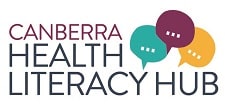Universal Precautions approach to Health Literacy
Universal Precautions for Health Literacy
Key points
- The universal precautions approach to health literacy helps all patients understand health information.
- It means:
- recognising that any patient you care for may have low health literacy, and
- making all health information and communication simple and clear.
- You cannot tell which patient has low health literacy by looking.
- This approach ensures you do not inadvertently add to the stigma that people with low health literacy can experience.
- The Universal Precautions Toolkit can help you put this approach into practice
What are universal precautions in health literacy?
The universal precautions approach to health literacy calls for health care services and professionals to assume that all patients and carers can have difficulty understanding information and accessing services.
It helps address the negative impact of low health literacy on people and the health system.
Following a universal precautions approach means[i]:
- understanding that the health care system is complicated,
- taking steps to make the system easier to navigate for everyone, and
- providing written and verbal information that is clear and easy to understand – for everyone.
This approach avoids stigmatising people with low health literacy. It recognises that you cannot know a person’s level of health literacy just by looking at them, or often even after talking with them. It also recognises that anyone can have trouble understanding health information or accessing services, regardless of their education level or proficiency in other areas of their life.
The Australian Commission on Safety and Quality in Health Care recommends a universal precautions approach to health literacy because [ii]:
- Everyone benefits from clear information
- It is difficult to identify which patients may be at risk of misunderstanding
- An individual’s health literacy can vary.
Having good health literacy one day does not mean the same patient will have adequate health literacy on another day or in a different setting [iii].
You should assume that there will be barriers to communicating health information and simplify the information you provide.
Using a universal precautions approach to health literacy helps all patients, as it is based on the principle of making information and services easier for all consumers to understand.
You should assume that your patients may not understand the information you provide and the advice you give about navigating through the health system[iv]
Tools and Resources
The Australian Commission on Safety and Quality in Health Care recommends using the Health Literacy Universal Precautions Toolkit, developed by the Agency for Healthcare Research and Quality in the United States, to help healthcare organisations and providers address health literacy.
Articles
Killian, L and Coletti M. The Role of Universal Health Literacy Precautions in Minimizing “Medspeak” and Promoting Shared Decision Making. AMA J Ethics. 2017;19(3):296-303. doi: 10.1001/journalofethics.2017.19.3.pfor1-1703.
Mabachi NM, Cifuentes M, Barnard J, Brega AG, Albright K, Weiss BD, Brach C, West D. Demonstration of the Health Literacy Universal Precautions Toolkit: Lessons for Quality Improvement. J Ambul Care Manage. 2016 Jul-Sep;39(3):199-208. doi: 10.1097/JAC.0000000000000102. PMID: 27232681; PMCID: PMC5085260.
References:
[i] U.S. Department of Health & Human Services Agency for Research Healthcare and Quality – AHRQ Health Literacy Universal Precautions Toolkit. Content last reviewed May 2017. Agency for Healthcare Research and Quality, Rockville, MD. http://www.ahrq.gov/professionals/quality-patient-safety/qualityresources/tools/literacy-toolkit/index.html
[ii] Australian Commission on Safety and Quality in Health Care. Health literacy: Taking action to improve safety and quality. Sydney: ACSQHC, 2014, Pg 21
[iii] Australian Commission on Safety and Quality in Health Care. Health literacy: Taking action to improve safety and quality. Sydney: ACSQHC, 2014, Pg 21
[iv] ACSQHC, 2014, Health Literacy: A summary for clinicians
Last Updated on 17 April, 2025.
